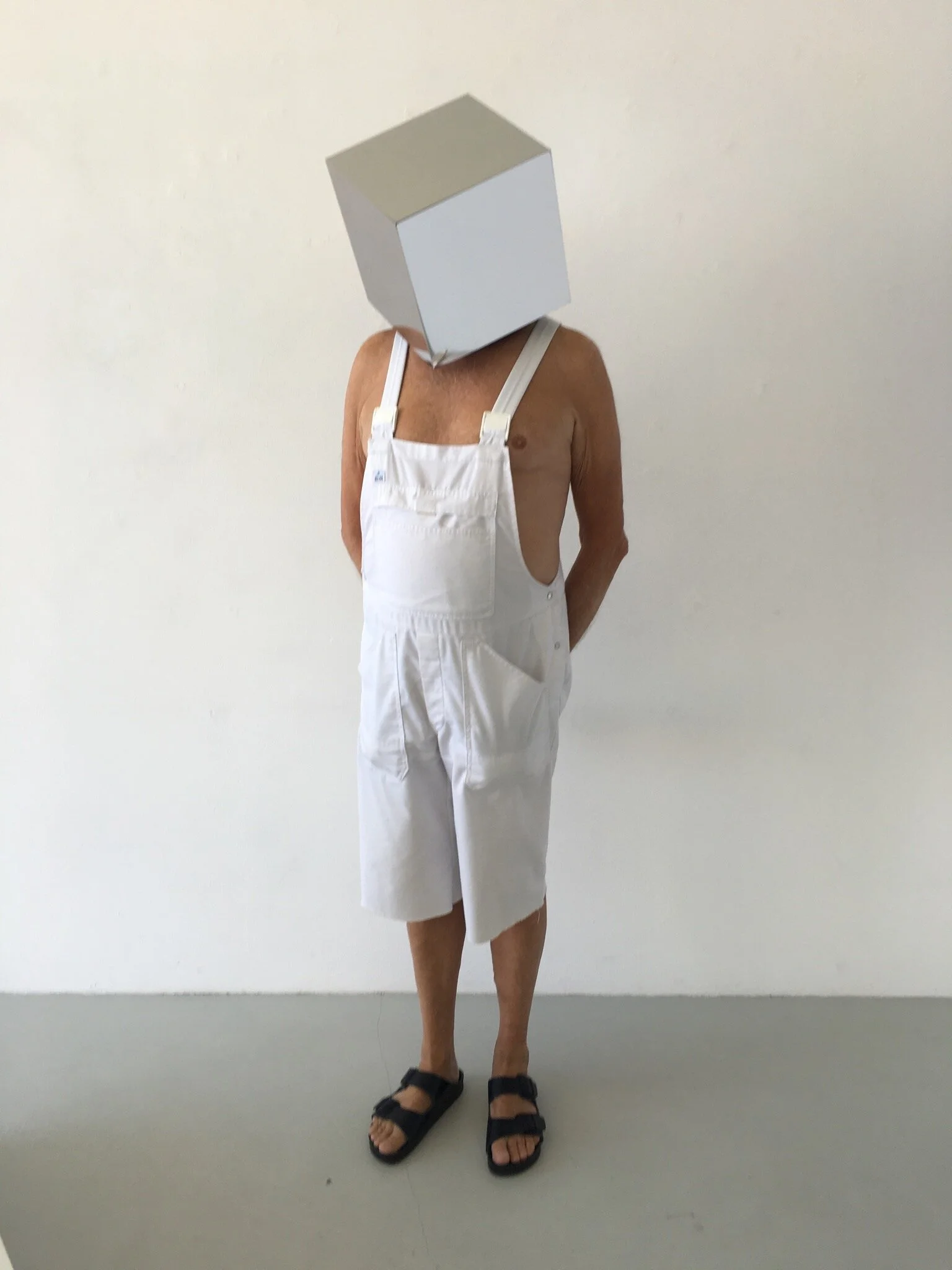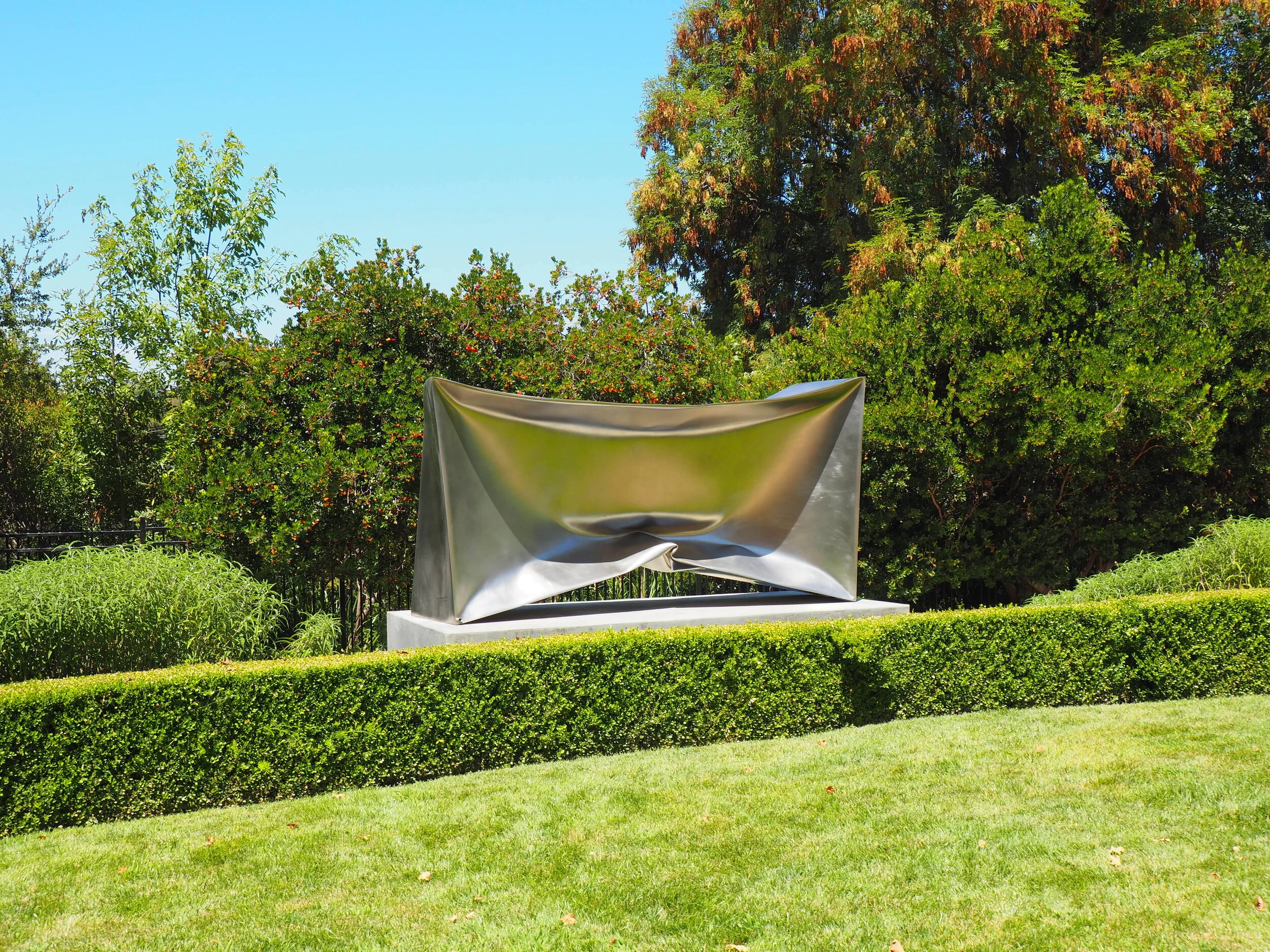Ewerdt Hilgemann "masked", Netherlands.
How are you spending your days during stay-at-home?
Working from home as always. However, the lock down isolation worked out in less outside contacts and consequently, less distractions. There were hardly any distinctions between the days, they all felt the same and I lost the notice of time and calendar.
Ewerdt Hilgemann, Detail of Cracked Cube, 2020, stainless / mirror polished stainless steel, 12 x 18 x 12 in.
How has this impacted work?
In spite of big commissions being postponed (city of Strasbourg) or even cancelled (Berlin), the inner need for compensation grew, leading to an intense concentration of a new body of work: ‘Cracked Cubes (Oyster Series)’.
For years I’ve been dreaming about building a tower, that after being imploded would be cut open and made accessible in order to also see the inside of the sculpture.
With the ‘Cracked Cube’ models 12” I achieved a combination: a brushed stainless steel outside and a mirror polished interior. It felt like opening an oyster!
Now I can’t wait to find a sponsor to realise a similar man size cube, open it up and walk inside!
Installation View of Three of a Kind, American Jewish University, Los Angeles, CA.
The American Jewish University, Los Angeles, CA has recently acquired your large scale imploded sculpture, "Three of a Kind", what is the significance of this work and of its setting?
The idea for Three of a Kind was to make three identical parallelepipeds, that after being imploded would be positioned in different ways: i.e. standing on the smallest base, standing sideways and lying down. I made these three for Royale Projects in LA, where they were exhibitied in 2017.
When looking at them, one really needs imagination and a close look to believe that these are (almost) identical.
In an abstract way, I believe they are symbolical of people’s visons on life. As human beings we are (almost) identical, yet we group and present ourselves differently, believing that makes the difference.
Especially as a German born artist, it is a great honour to be represented in such important surroundings, where intelligent people meet and visions on life are formed.
Installation View of 'Work in Progress (1959 - 2020)', Kröller Müller Museum, Netherlands.
Your current retrospective, 'Work in Progress (1959 - 2020)', at the Kröller Müller Museum, Netherlands was postponed for 10 weeks due to COVID-19, but finally opened on June 1, talk to us more about this exhibition.
Between 2014 and 2019 the museum bought a number of works from different periods and it was decided to show them in four spaces, starting March 14, 2020.
Together we worked out a concept showing different periods in each room. One room with wooden wall pieces from the 1960s during my German time, followed by another with wooden wall pieces and sculptures from the 1970s when I moved to the Netherlands. The following room contains marble pieces and events while I had a studio in Carrara, Italy and did experiments with gravity, explosion and finally implosion in the 1980s. Last but not least is a room with a new body of work from the second millenium: my ‘Implosion Sculptures’.
Of course it was unfortunate when the Dutch government decided that all museums had to close down on the very day my show was to open! It took a while before a Dutch saying dawned on me: “there’s an advantage in every disadvantage”.
Imagine, the opening party had been scheduled for a selected group of collectors, sponsors and friends, but then it was cancelled! And when the museum did reopen on June 1, everybody had to go through the procedure of buying a ticket online and booking a time slot.
Because of this, we connected with friends and suggested to make our time slots match! Ever since we’ve been driving up to the museum regularly, only an hour’s drive from Amsterdam. The beautiful park with old trees and an exceptional sculpture garden proved to be the best place to meet and walk the vast in- and outdoor exhibitions together for hours.
The surroundings and taking our time with ample opportunity to get to know each other even better were experiences that a ’social’ opening party could never have achieved. We enjoy every minute of it.
Ewerdt Hilgemann, Studio View, Work in Progress for Imploded Pyramids (Missiles), 2020, Netherlands.
What do you imagine for the future of the art community and world at large as we rebuild together?
To me it’s obvious that our social structures have grown out of proportion. Competition and money making have taken over, destroying natural relationships.
I can imagine less inequality between people and countries, a more personal approach and interest for detail, as well as responsibility for our surroundings and the planet at large.
The artworld would benefit from a larger number of activities on a smaller scale, rather than focussing on big events with large audiences, be it visual arts, music, or theater.
Since we are in this world all together, we should think and (re)build together!





